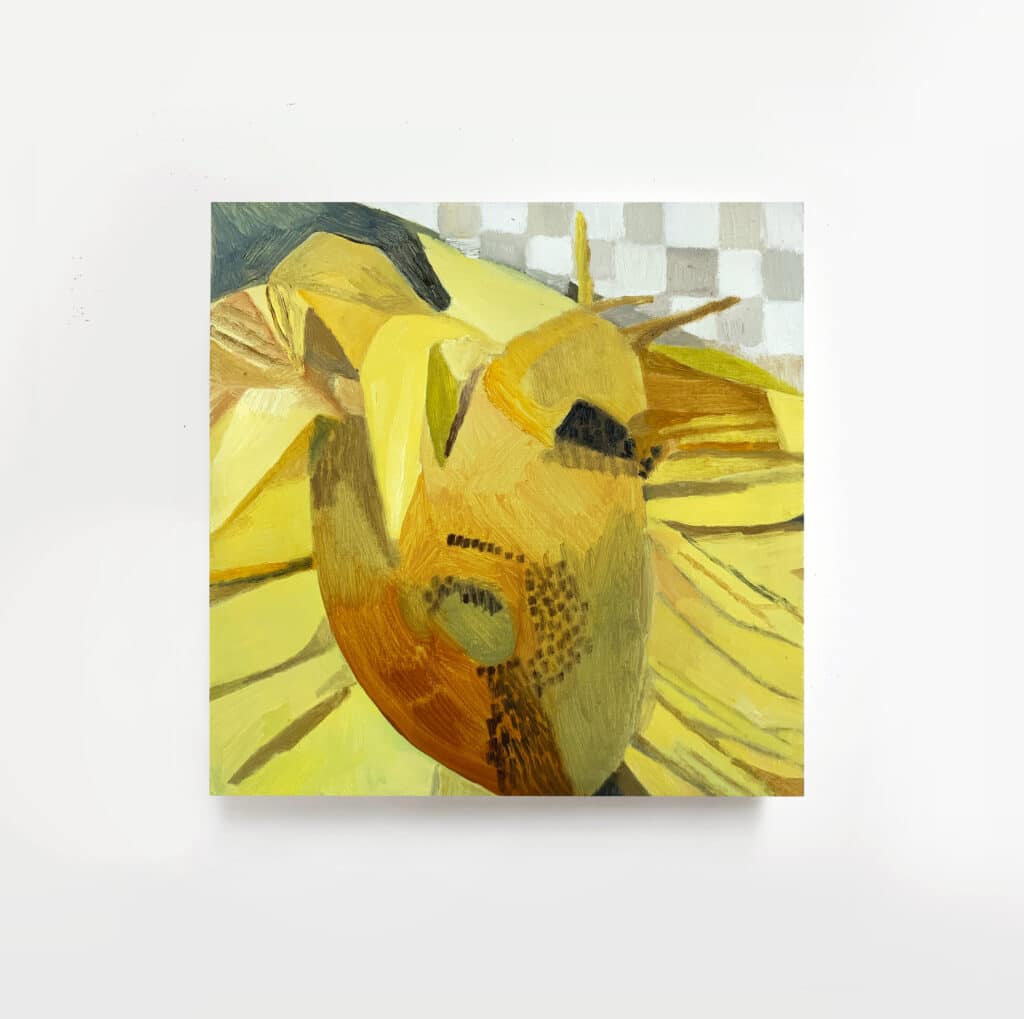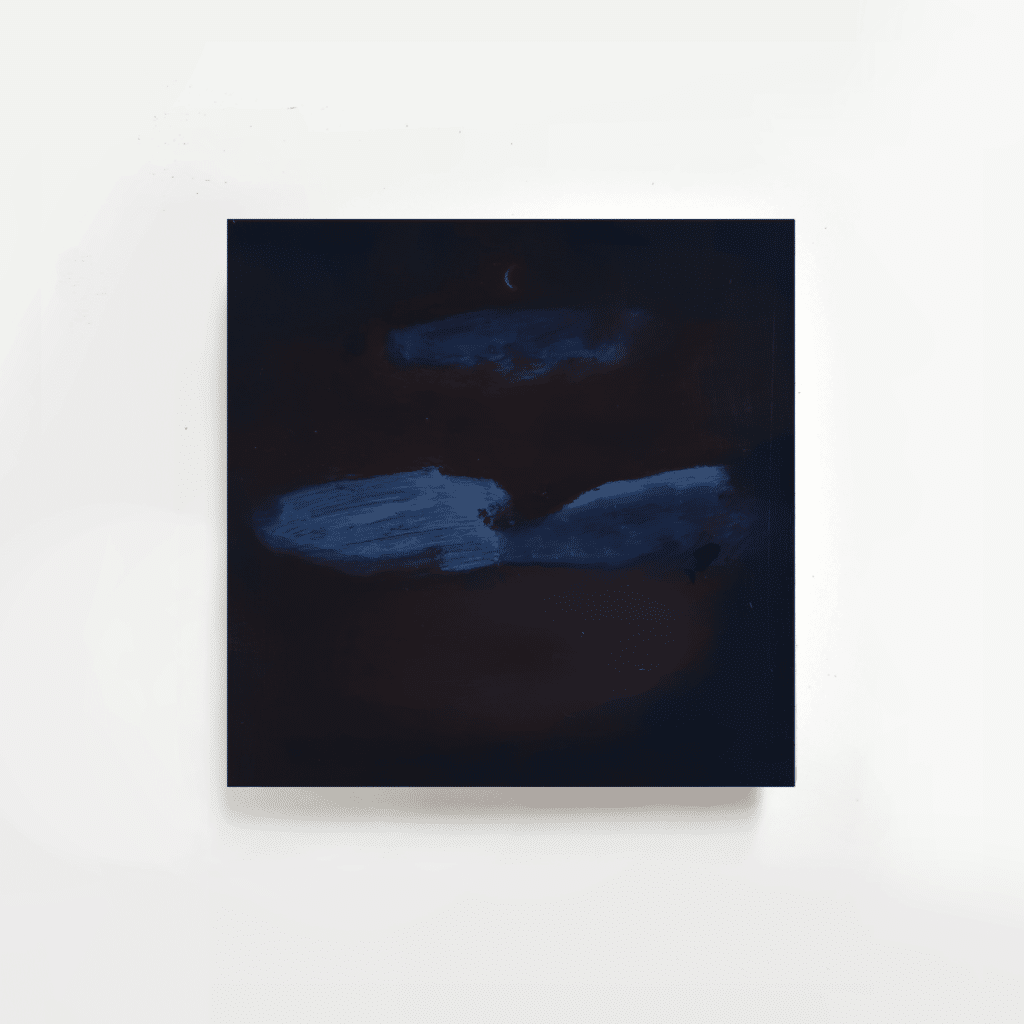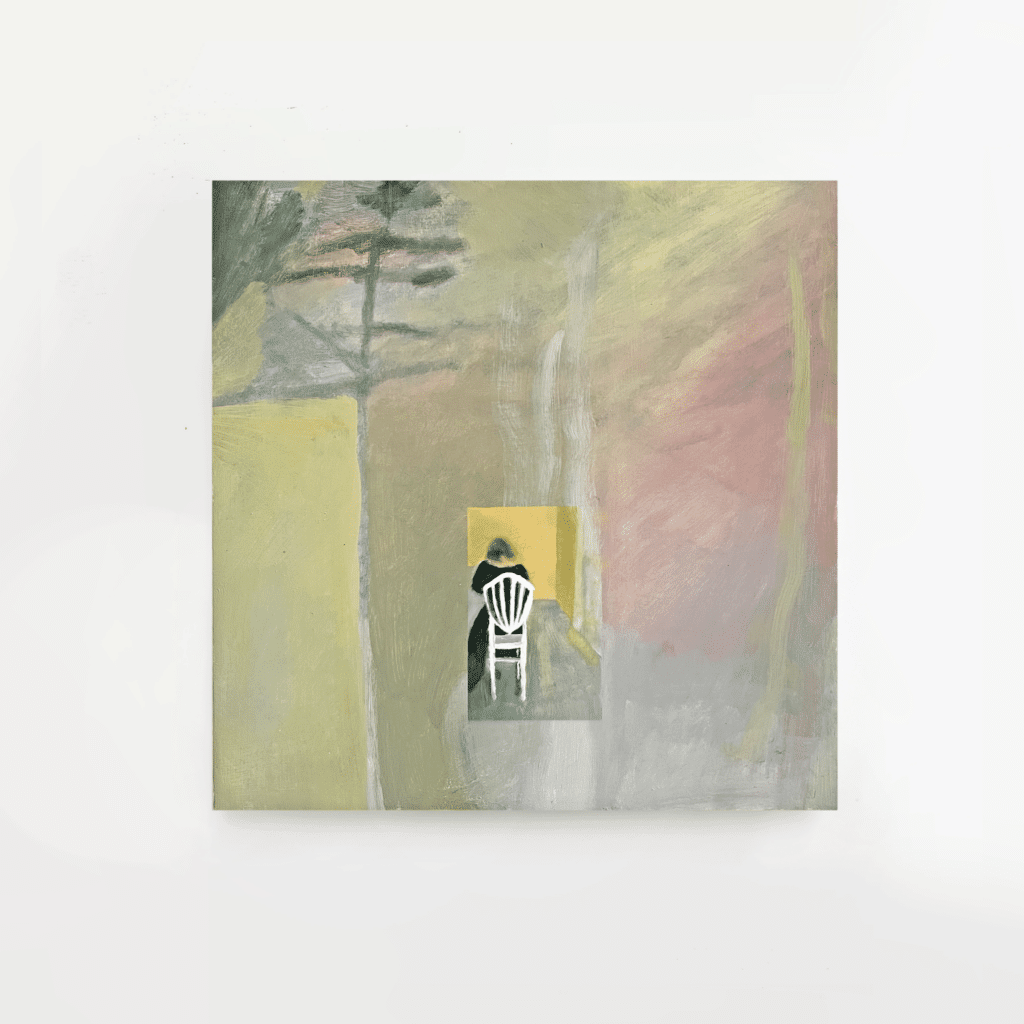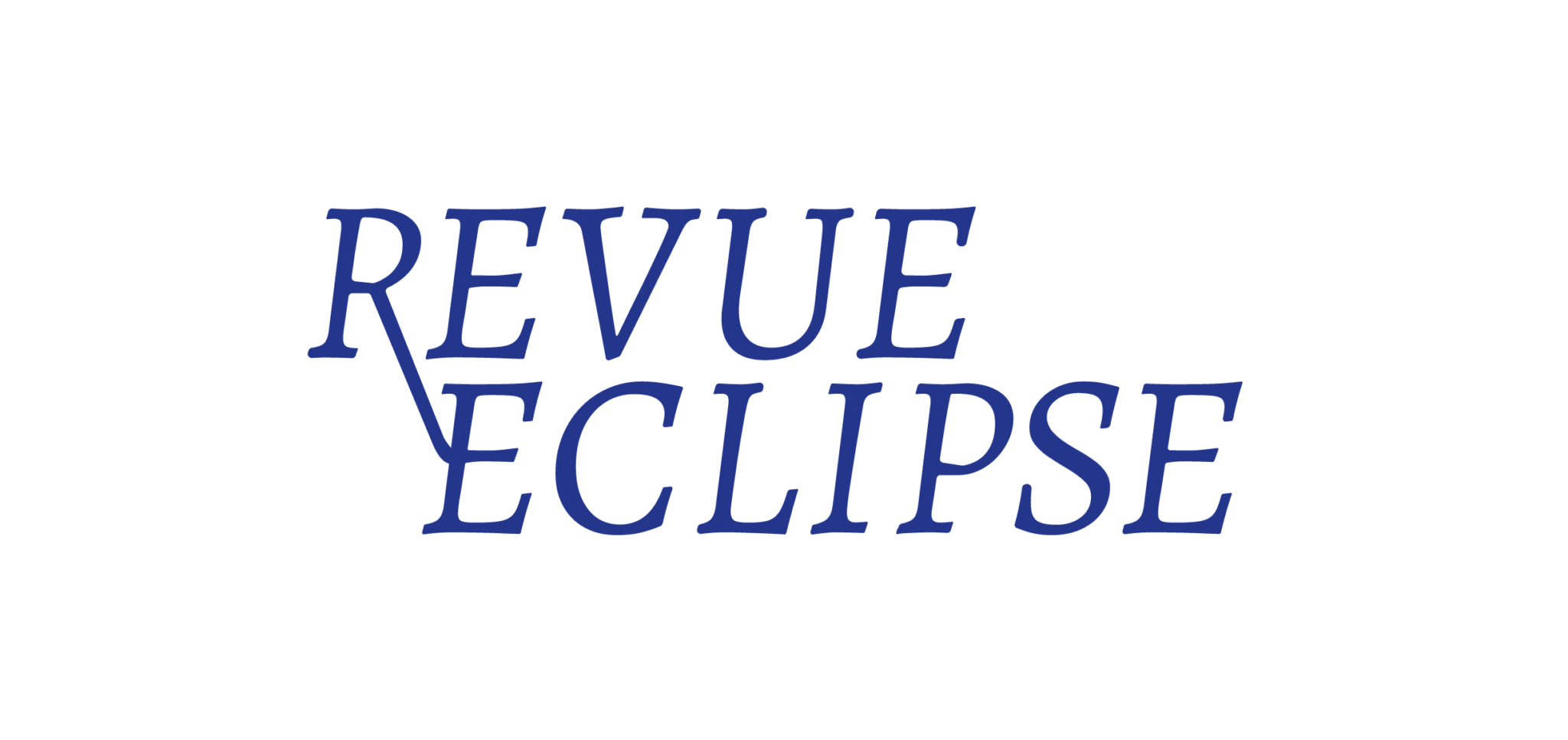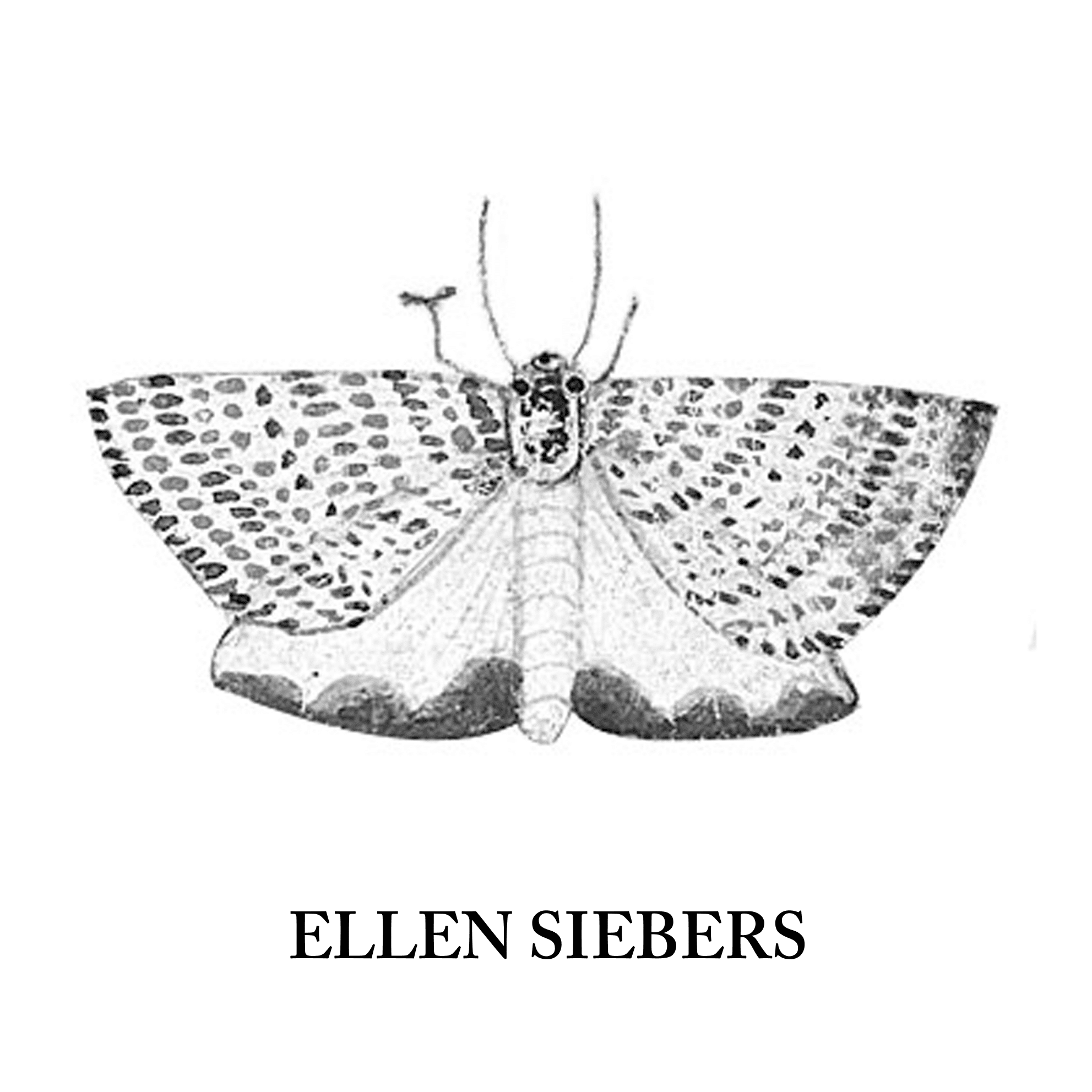
Ellen Siebers

Ellen Siebers was born in 1986, she lives and works in Hudson, New York.
Siebers’ paintings relate poetically swirling experiences and observations of ordinary moments, thoughts, and visions. An omnipresent eclosion of beauty is explored through her square canvases; this fascination for the ordinary is part of our actual exploration of the Assignificant in the Revue Eclipse.
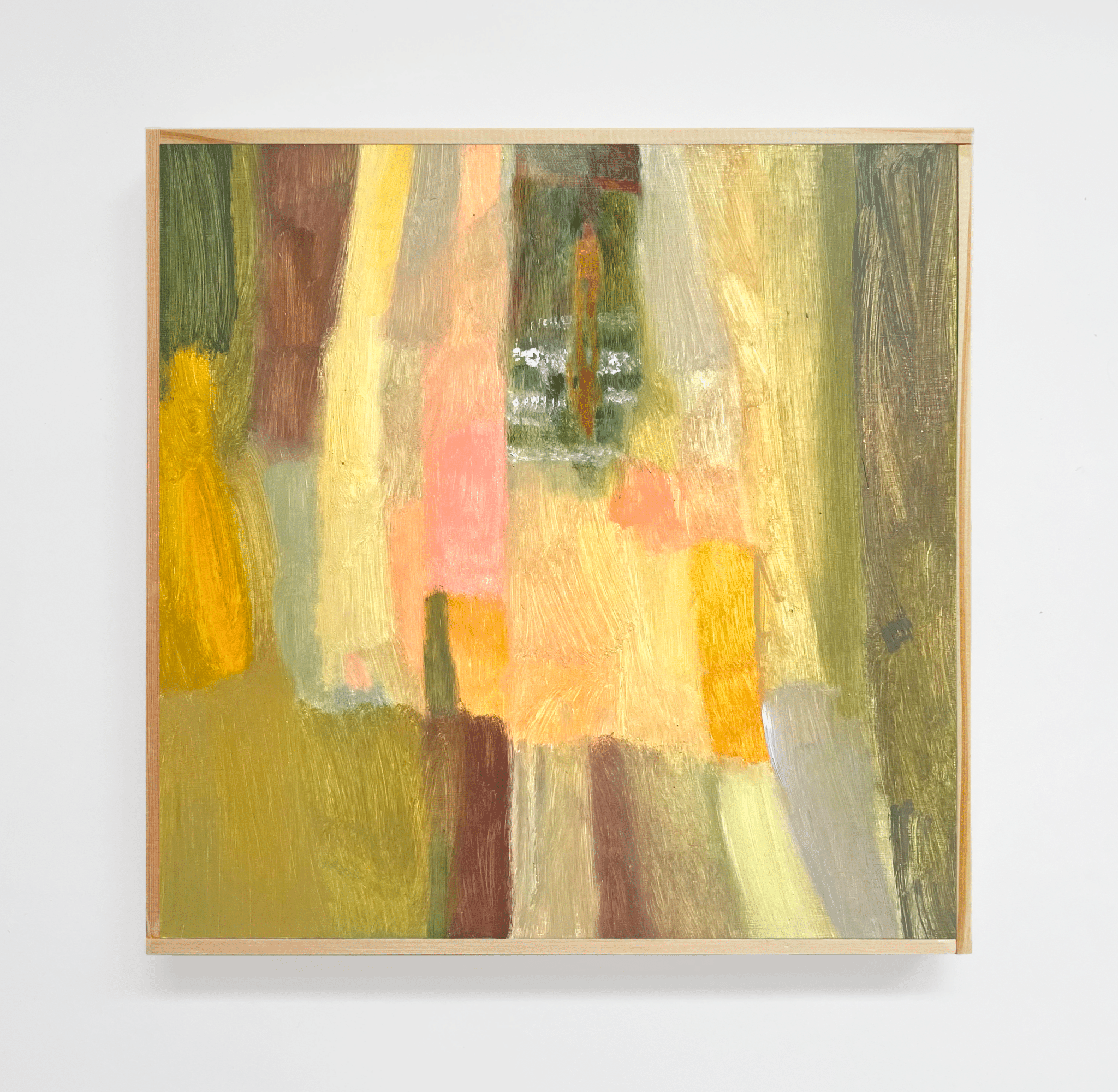
1. Could you tell us more about artists that inspired your artistic path ?
If I go way back, the first artists I remember reacting strongest to are Vermeer, Matisse, and Manet (I had very limited exposure to a wide range of work since I grew up in Wisconsin and didn’t go to a large museum for the first time until college. My high school art education was very much just focused on the male/European camp). Then a bit later Agnes Martin made the biggest impact, and she is still my hero. I have an Agnes Martin tattoo on my wrist.
2. Are there writers, philosophers, or musicians that influenced you as well ?
Anything written by Mary Oliver, Daybook by Anne Truitt, On Beauty and Being Just by Elaine Scarry, Annie Dillard, Peter Schjeldahl, Charles Simic, Elizabeth Bishop, and Tom Petty.
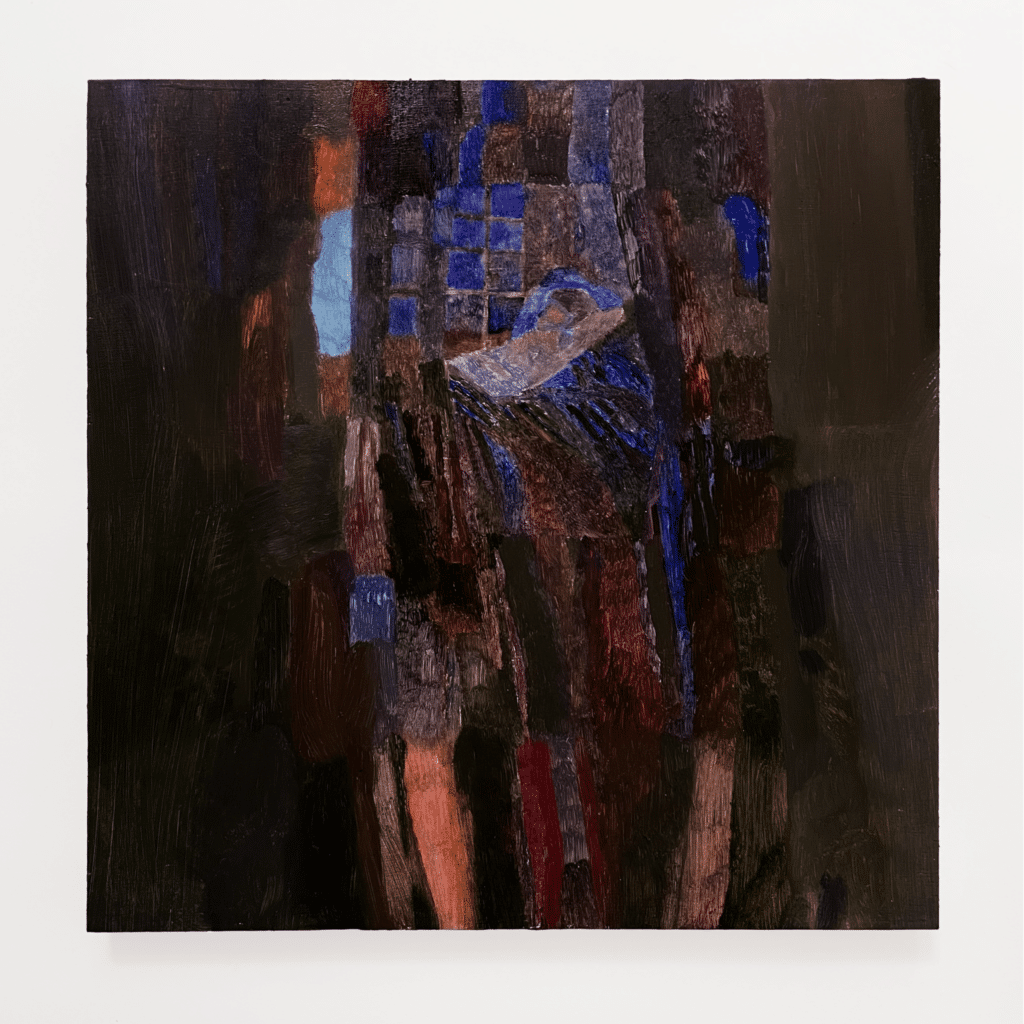
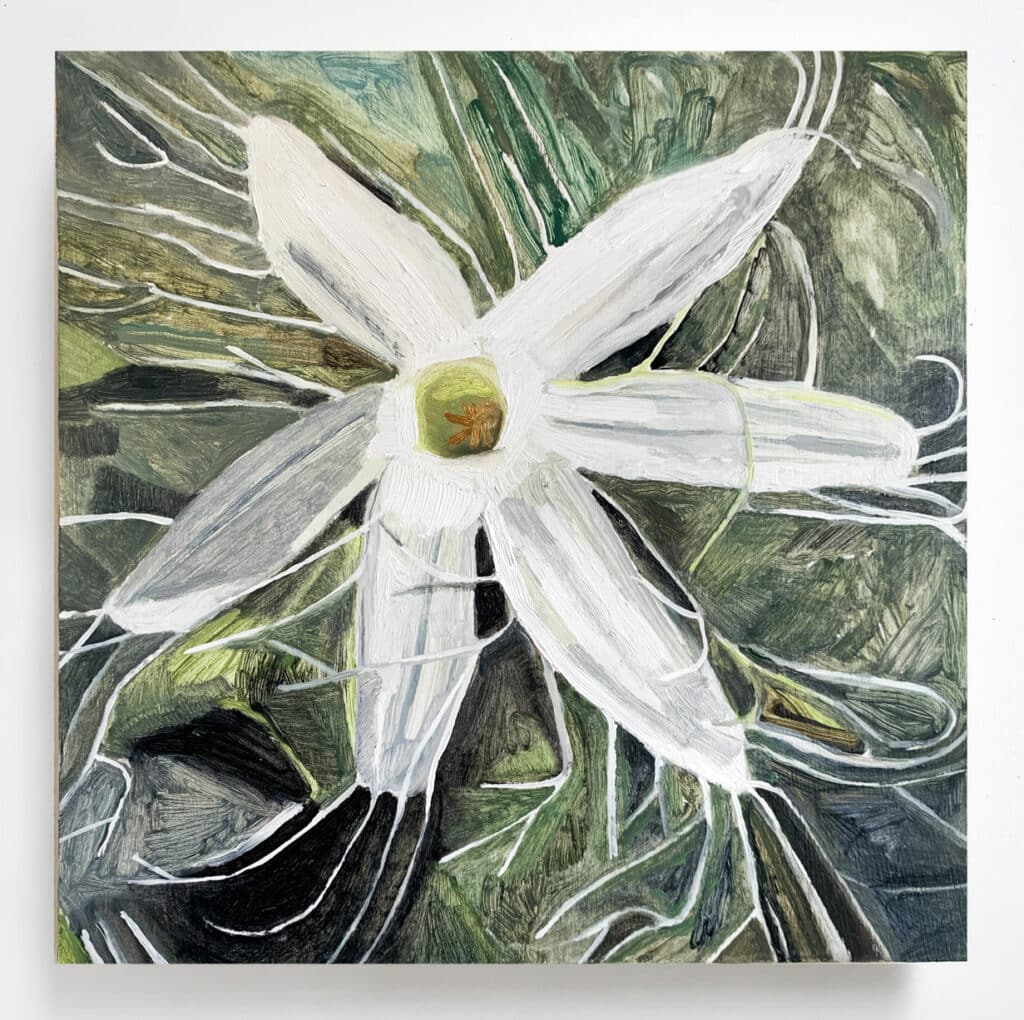
3. How does the idea of a painting come to your mind?
Sometimes the ideas come slowly and marinate over the course of weeks, and sometimes they hit like a lightening bolt when I see something striking that resonates. However, most of my solid ideas totally dissolve once I start to actually paint. The good paintings then come from a subconscious place. Since I don’t have linear thoughts while I am painting, the things I have been thinking about and digesting then arrive in painting language. This whole process is pretty mysterious to me since I cannot predict what I will do in a painting session. My best-preconceived ideas are usually where paintings go to die, and I kind of love that even after all this time I never know where a painting will wind up. It makes me want to work a ton since I never know when I might make a good painting.
4. The first impression that we had while discovering your works, was this omnipresent eclosion, as if fertility was explored in its different facets. How would you relate to that?
I love that. I think that relates directly to what I just mentioned about the mysterious cross-fertilization between deeply felt ideas and the act of painting. The common desire to replicate a beautiful object, moment, or environment is as fertile as it gets in my mind. It fuels everything.
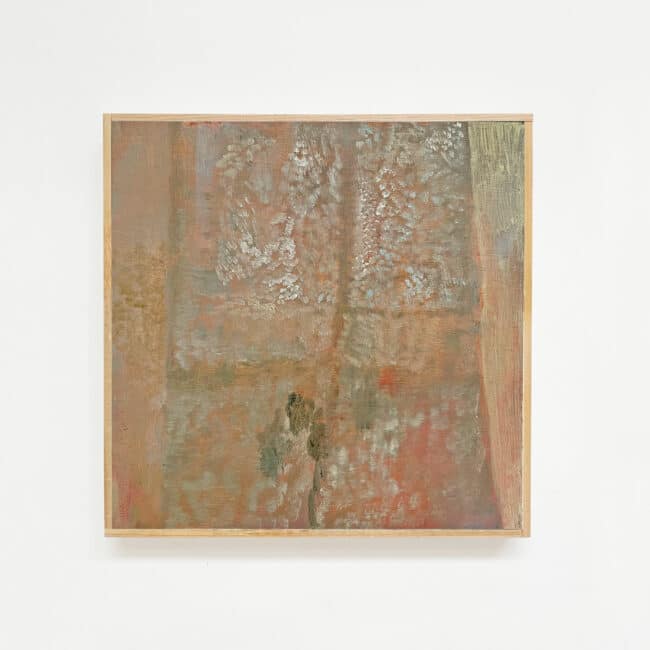
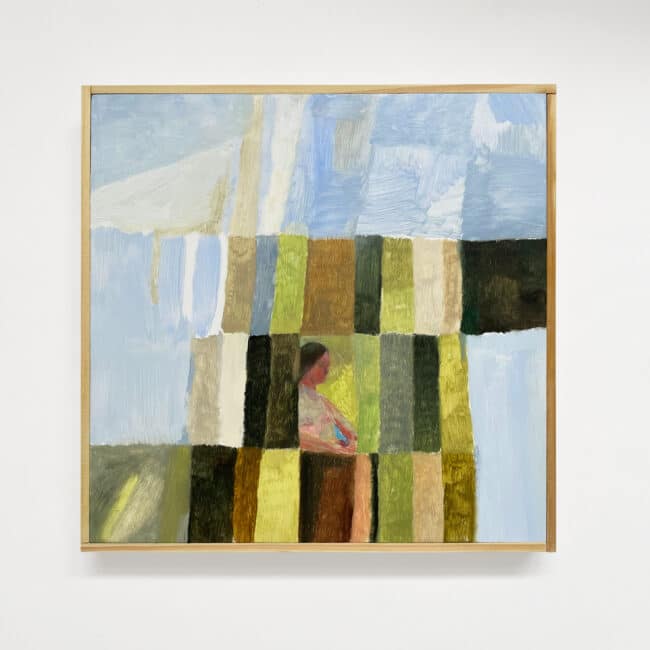
5. Different types of flowers are one of the major figures punctuating your artworks, often with a close focus, why are they so important to you ? Does it convey any symbolic meaning?
They are important to me because I think the experience of observing and duplicating beauty is a hopeful act. For me, all the little glimmers of beautiful things throughout the day are what makes it all worth it, so they don’t necessarily have specific symbolic meaning. I take them for their immediate value and impact upon my daily life. Their value is inherent and accessible.
6. Figuration is present in most of your works. Still, it seems it is employed in an abstract way, as if the figures were an opportunity to express visual entities in a colorful composition. How do you apprehend the porosity between figuration and abstraction in your works?
I think of my experience in two different camps – there is the part of me that is an observer/consumer and the part of me that is a sponge. They inform each other. When I sit back and take in a scene, there is a part of me that is engaged in specificity, and then there is a part of me that is taking in color, vibrancy, temperature, and motion (that’s the part of myself I think as a sponge). The paintings often contain both parts of myself, the sponge being the abstractions deeply felt as an observer while the more realized parts related to more specific thoughts. I love the idea of porosity between the different experiences/entities – I want the viewer to be able to flow throughout the painting and experience it all in equal regard.
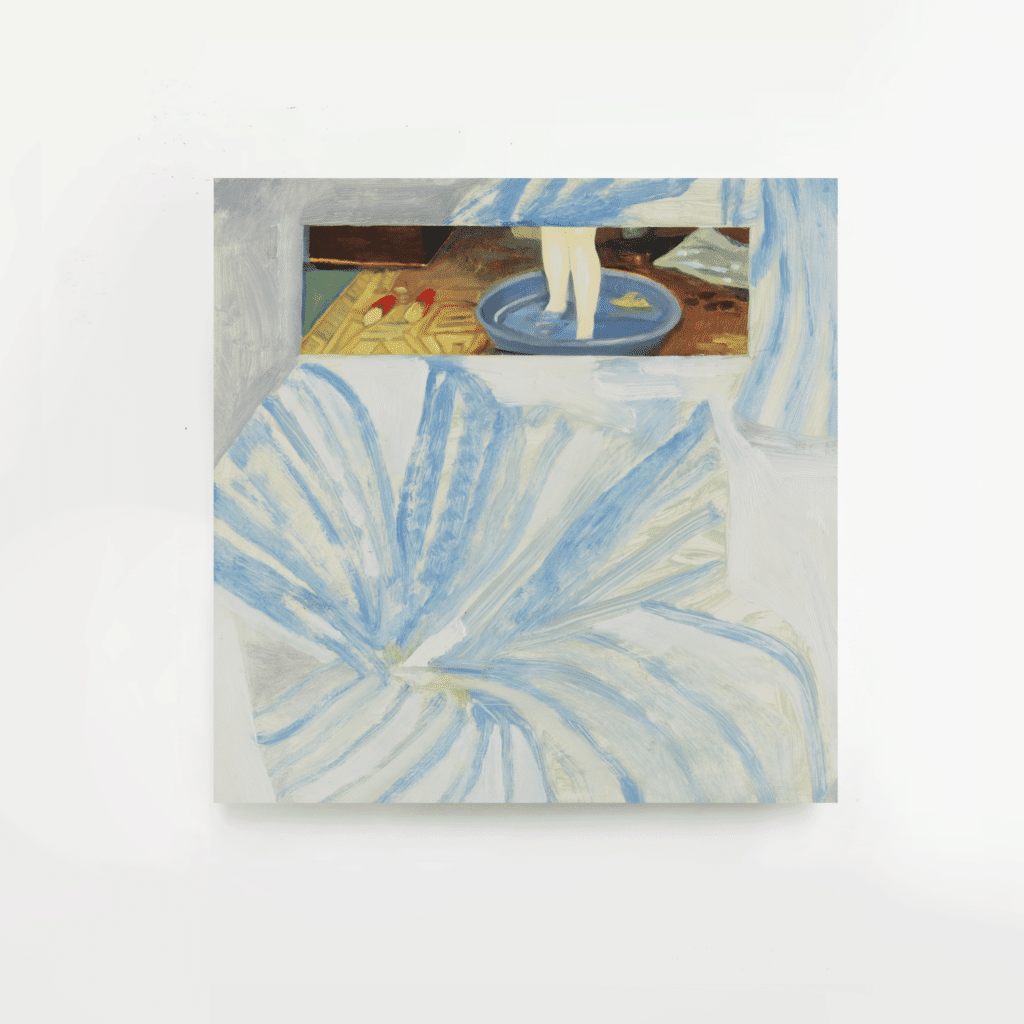
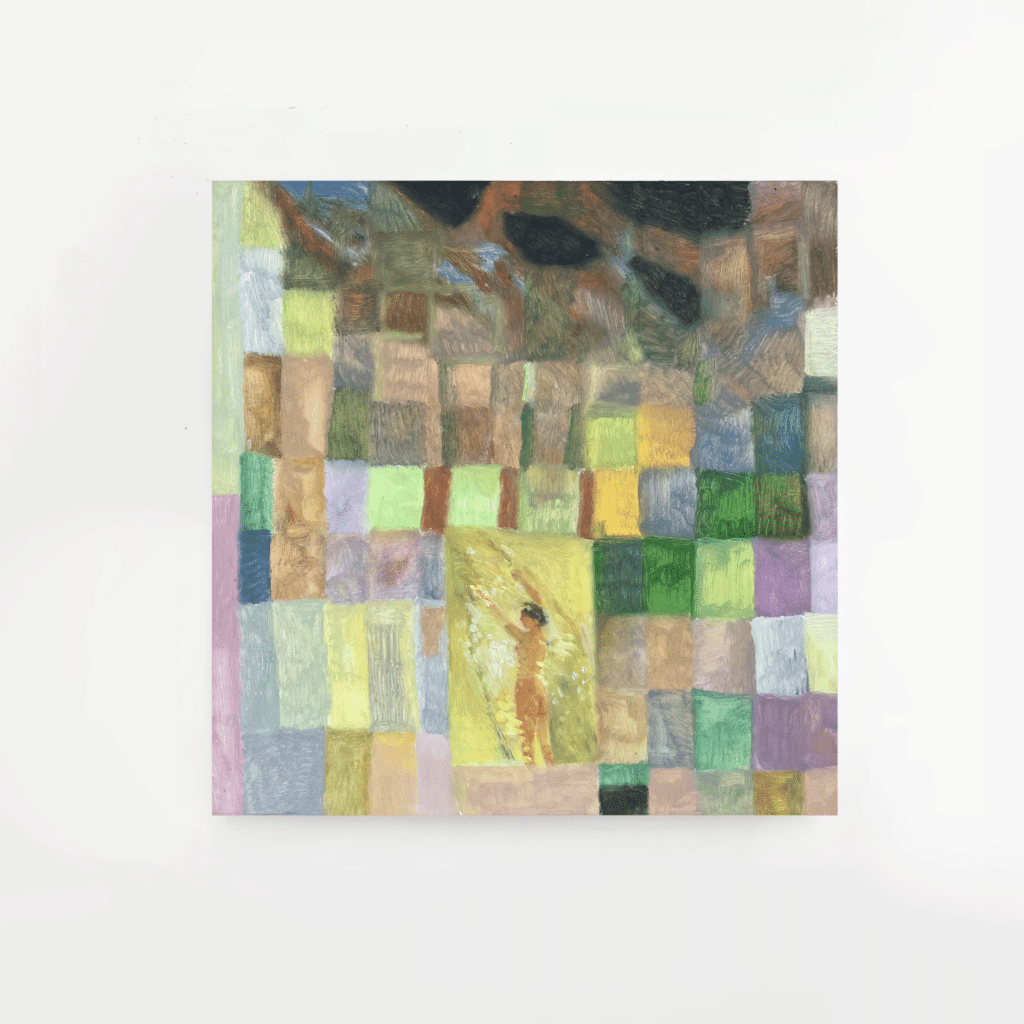
7. An extremely original visual motif in your compositions is the creation of small vignettes that strikes out of the general theme of the paintings, as if it was a theater in the general theater of the depicted scene. Could you tell us more about this recurrency?
I touched on this a bit – the tension between being an observer and being a sponge, or a vulnerable participant in the world of vibrancy and beauty – and the desire to fit that all in one picture plane. It definitely is theatrical, but for me there is no linear narrative. It is more about the loose, swirling experiences of small moments of beauty in daily life seen through an art historical lens.
8. Talking about these vignettes, they often tend to refer to classical paintings of the XIXth and XXth century, is it really the case? What would be the meaning of such a dialog with these historical references?
Sometimes the vignettes are direct references, and sometimes they are not, but even if they aren’t a direct references they do specifically reference the history of painting as you mentioned. I have a deep love of these subjects and I look at the world through the lens of art history. And as a woman, I delight in the idea of the gaze being my own, not the typical male gaze of female figures in art history. I think of myself as a figure within the painting, and like to show what the figure is experiencing so it isn’t just an expression of a figure being observed but a visual of an entire bodily experience. The vulnerability of the figures echoes my own, but it is also an extended love letter to the history of painting.
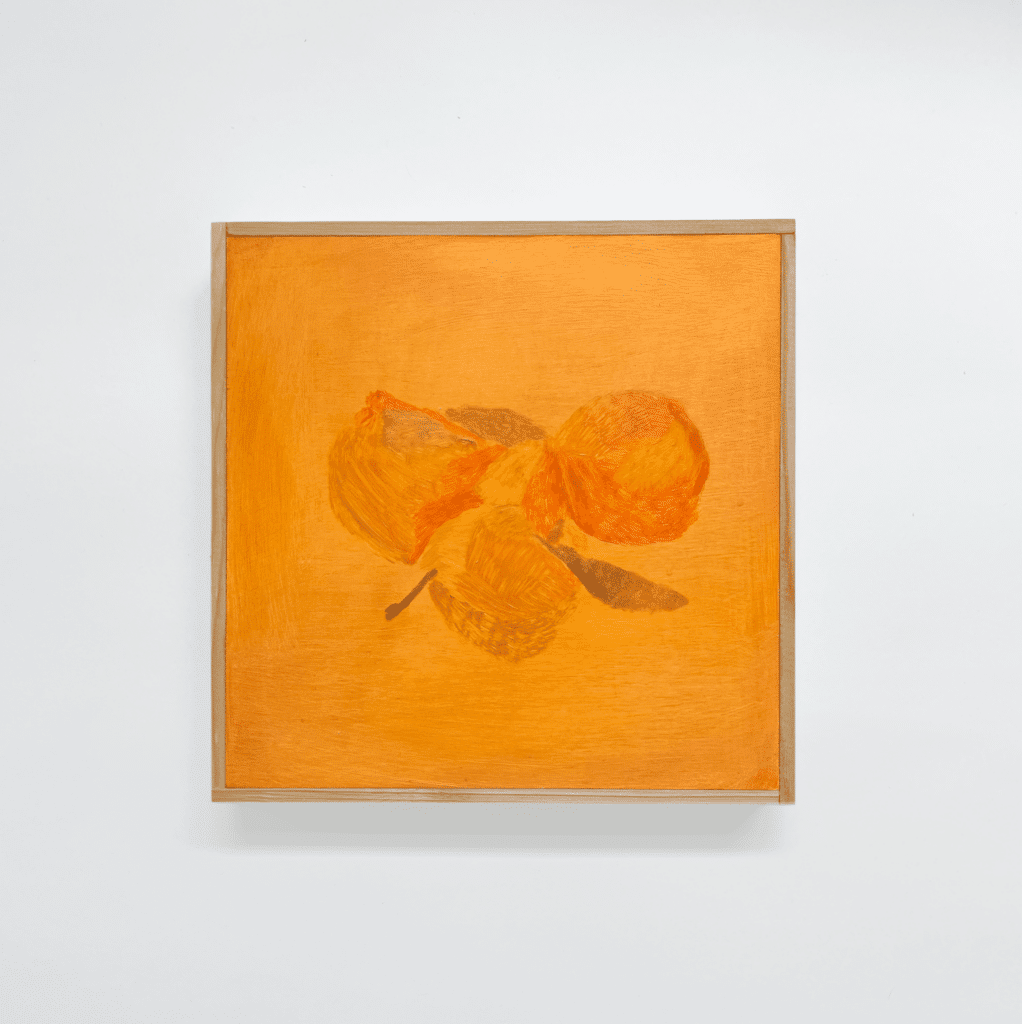
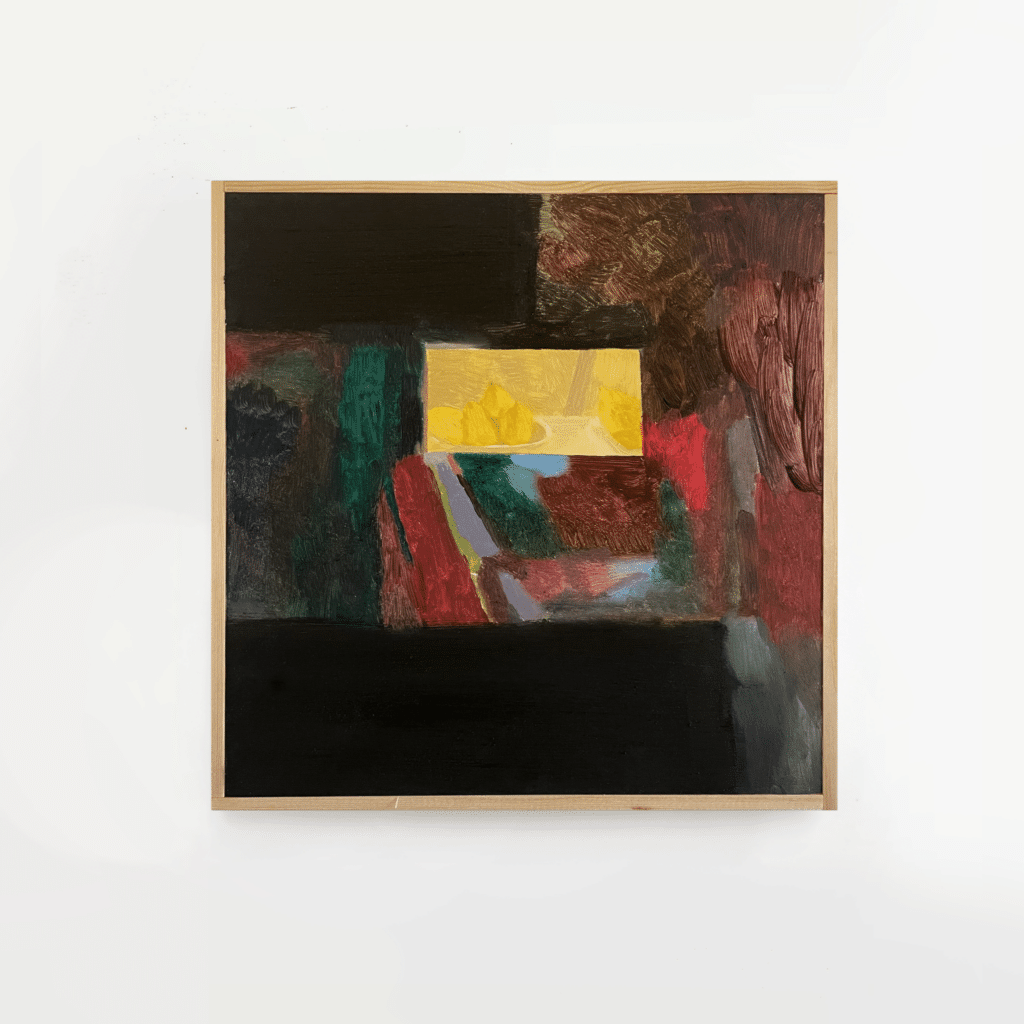
9. Your palette is very rich, you tend to refuse to limit yourself to a narrow chromatic range. Sometimes there are strong color contrasts, while in other paintings it is more reduced; how do you apprehend your colors?
I consider myself to be an observational painter, so my work tends to be informed by the ever-changing palette of the upstate New York landscape. I use whatever colors I am experiencing, so in the summer, when I am gardening, the palette is more diverse than in the wintertime. I use whatever I see and experience. I would never limit myself since the world I live in is unlimited.
10. Is there an intent or a reference related to the square use for most of your canvases?
In the past I chose the square because of its stability, but also that it is equal parts object and portal. Historically the square gestured more toward the painting as an object. I am now using both rectangles and squares, which is the first time I have painted in a rectangular format in over ten years. It feels good to be able to explore the entire range now. Sometimes the subject calls for more verticality/a reference to the idea of a window.
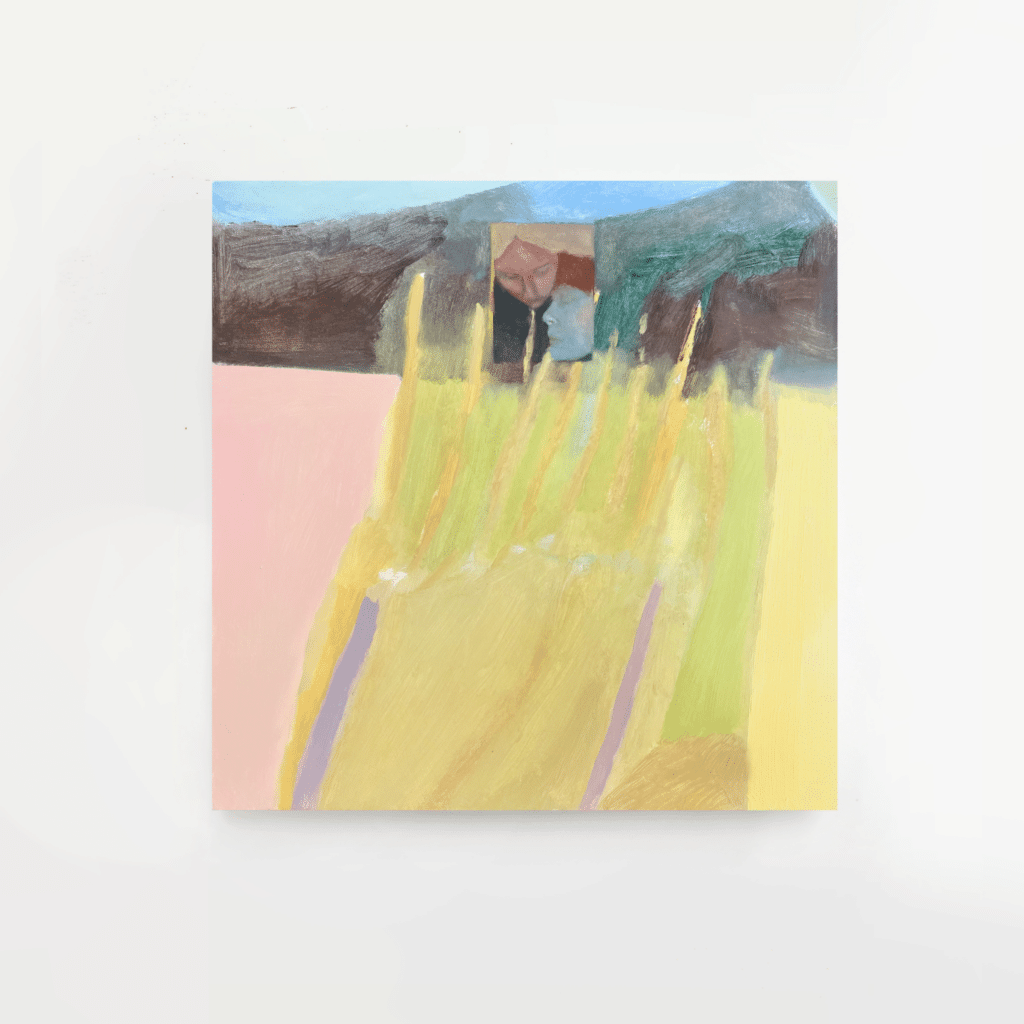
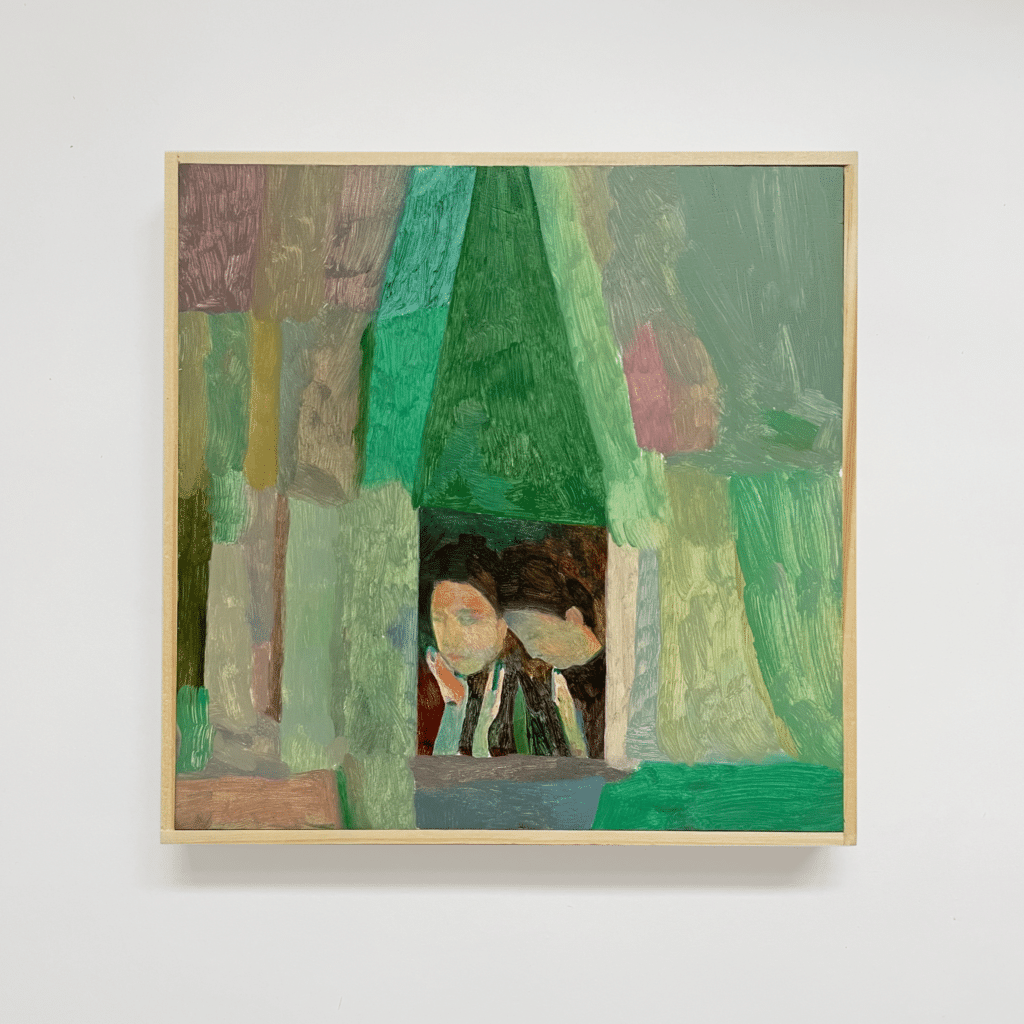
11. Tell us about a typical day of your work?
I usually take my dog for a walk, take some time to garden/read, and then will spend the rest of the day in the studio. I am fortunate to be able to paint full-time, so some days I need to paint all day and some days I spend looking/researching.
12. Do you have any future or current projects to share with us?
I am in a really special group show at Parrasch Heijnen in LA until early June alongside some of my heroes like Jennifer Bartlett, Ed Roucha, and Forrest Bess. Some other projects are in the works for later this year. This summer I plan on taking a break from showing to just focus in the studio.
